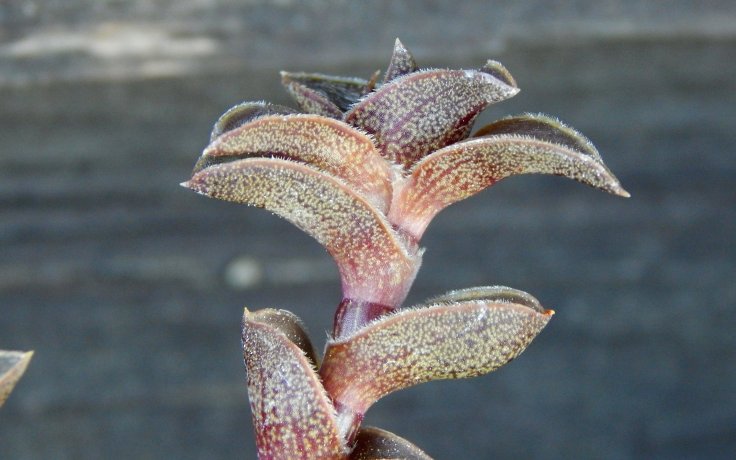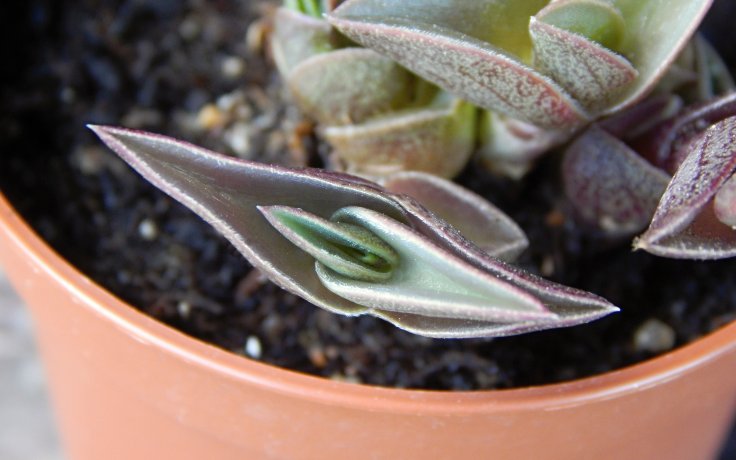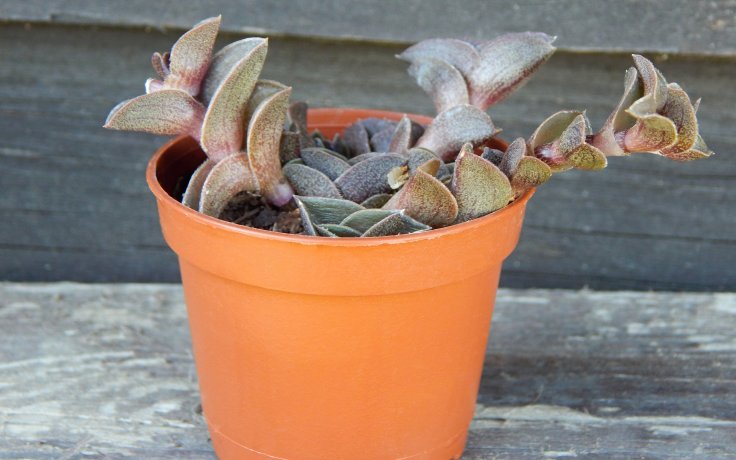- Home
- Succulents
- Tradescantia
- Tradescantia navicularis





Tradescantia navicularis
Suitable for partial shade, but can also be grown in full sun.
Always water a few days after the substrate has dried out. Watering should be reduced in winter.
It likes room temperature, but can tolerate 5 °C in winter.
The plant is nicknamed Peruvian Boat Plant because of where it was found and its appearance.
Tradescantia navicularis, also known as Callisia navicularis, was first described in 1877 by Mr Ortgies. In 1983 D.R. Hunt assigned it to the genus Callisia on the basis of some of its characters. It was originally found in Peru in the 19th century and subsequently cultivated for a long time in the Zurich Botanical Gardens, but today the species is found nowhere else but in Mexico.
The name "navicularis" refers to the articulated shape of the leaves. The leaves turn green in shade and reddish-brown in sunlight. The leaves are boat-shaped with a sharp, slightly outwardly curved tip, are firm and grow from two types of stems. The basic stems have densely clustered succulent leaves, while the second type of stem has large distances (internodes) between the leaves. The dense ground-growing, almost creeping, growths reach a height of about 10 cm.
Pink flowers appear in summer. It is recommended to remove them after flowering to preserve the aesthetic appearance.
In the event of high temperatures, especially if the succulent is placed in an unventilated greenhouse during the summer heat spike, the plants may partially retract into the ground. The leaves are then purple all over and do not grow. If there is a period of cooler temperatures the plant will recover. In heavy shade, the leaves are light green and the pips are tiny. Overall the plant is undemanding and does not need to be fertilised. The plant is particularly popular with our customers because of its atypical appearance and the shape of the spheres. Thanks to its unpretentiousness, it can be grown by anyone.